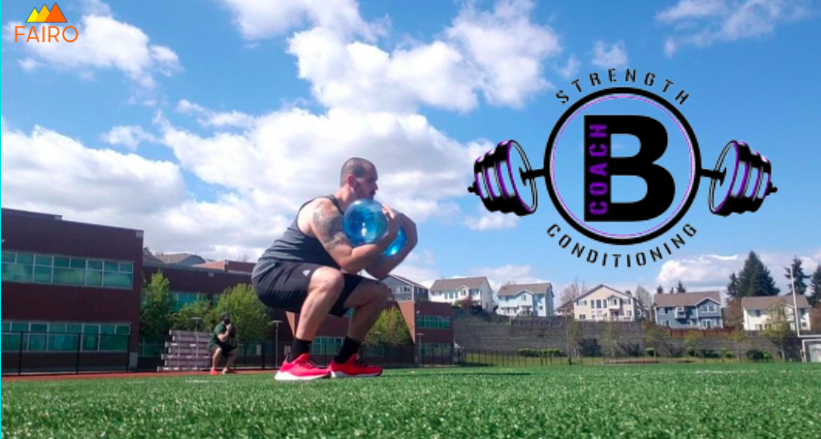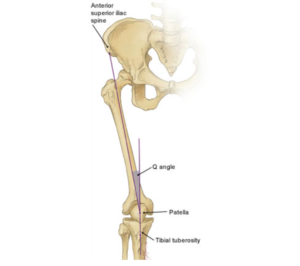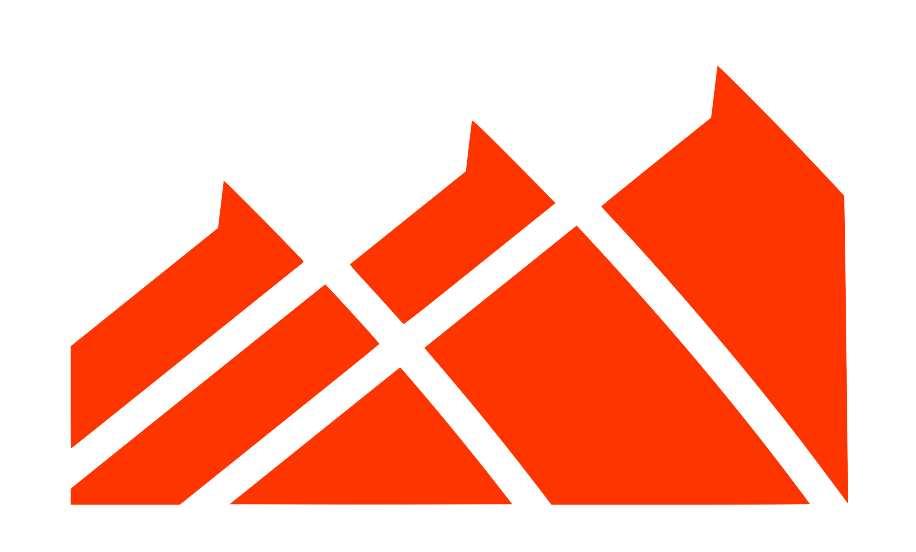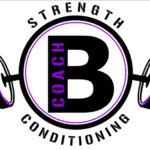Tacoma Strength and Conditioning Coach Brent Roling Offers 3 Tips for Productive Home Workouts and Application to Soccer-Specific Training
by Brent Roling, MS, CSCS 30 December, 2020
When it comes to strength and conditioning, equipment is critical. Barbells, dumbbells, medicine balls, cable machines, resistance bands, sleds and more all have their role in preparing an athlete for competition. So, do we just stop training when access to this equipment is limited or non-existent?
After a couple months of being able to go back to the gym and lessening restrictions, we have taken a step backwards (regarding COVID-19). As a result, Governor Inslee has released a proclamation that has once-again forced gyms and other amenities into closure to limit the spread of COVID. While having access to equipment is ideal, a lack of equipment access does not mean you have to stop training. Here are my three tips for continuing productive training with limited access to equipment:
#1 Set goals
The most important thing you need when designing a training program is a goal. It is important that this goal is realistic and manageable. If you set a goal to increase your mile time by 3 minutes in one month, you are most likely not going to accomplish that goal (not saying it is impossible). Even if you improve your mile time by 1:30, you may feel a sense of failure or lack of motivation because you did not achieve the specific goal you set for yourself. Some good goals to start can be a) moving for 45 minutes per day, 4-5 days per week for a month, b) limiting unhealthy foods in your diet (feel free to pick specific ones that you have a tendency to indulge in), or c) committing to some sort of soccer-specific skill work for ten minutes per day, every day. The third goal may seem insignificant, but if you think about it, that equates to an extra ~300 minutes of skill work per month with a measly investment of ten minutes per day.
Having a goal will also help you determine what type of programming is right for you. Decreasing your mile time vs. Increasing your squat max will look vastly different when it comes to setting up a strength and conditioning program. Having a program specifically structured around your goals will put you on a direct path to achieve them.
#2 Keep Track
Keeping track of your progress is crucial. When I create programs for my athletes/ clients, I provide them with spaces to write body weight, amount of weight used for certain exercises, and even notes about how they are feeling on that day. I also recommend everyone keeps track of their sleep and dietary habits. Tracking this data will allow you to see your progress in real time, as well as pinpoint reasons why you may have missed the mark on a day or two. Nutrition, sleep, and stress management are critical when it comes to performance. So, if you miss a ‘checkpoint’ you thought you were going to hit on a given day, you can have a better idea of what caused you to miss it. It is also important to understand that, because of factors like sleep and nutrition, progress is not always linear. There will be off days. How you respond to them will ultimately determine what kind of results you will get from your program.
#3 Be Creative
This tip is the most relevant to issues surrounding a lack of access to equipment. There are plenty of ways to obtain results without equipment access, you just need to be a little more creative. Here are some great equipment substitutes that cost under $40 each.
- Water Jugs: Water jugs may be my favorite alternative modality for a couple reasons: a) you can add or take out water to alter their weight- essentially making them an adjustable dumbbell and, b) the water moves with you. The movement of the water creates a more dynamic resistance than a typical dumbbell, requiring your muscles to work harder to stabilize joints and execute movement patterns. Essentially you get more work with less weight. They also come in virtually any size (24 oz, 1-gallon, 3-gallon, 5-gallon).

- Resistance bands: I have every single one of my athletes and clients use resistance bands in their programming. Why? Because they are an amazing tool! Resistance bands are a unique modality in a sense that they provide variable resistance. The less tension on the band, the less resistance, and vice-versa. Because of this, bands are useful in almost any training application. They also come a wide range of sizes and levels of resistance. You can find resistance bands in any sporting goods store, Fred Meyer, Wal Mart and on Amazon (Click “Amazon” for link).
- Backpacks, Duffel Bags, Suitcases: A lot of people do not even realize that they can use these things as workout equipment. It is ironic because everyone realizes how heavy a suitcase is when they are in the airport, but not when it comes to finding ways to workout. Almost everyone already has a backpack or suitcase. Just find some heavier objects to load into your luggage and you have a great alternative to dumbbells.
Application for Soccer-Specific Training
When it comes to soccer training, the main points of emphasis should arguably be lower body strength/ power, integrative core strength, and reduction of injury risk. There are many other factors that should be considered in soccer training, but I believe these three are the most important. So, let’s address how my three tips will help you in these key components of training.
- Lower Body Strength and Power: Sufficient lower body strength and power are crucial for soccer players, regardless of what position you play. Forwards and strikers need strength and power for acceleration, change of direction and ultimately, kicking (scoring). Keepers need lower body strength and power to be able to react quickly in the direction of a kick and earn a save. Change of direction and acceleration could easily be their own points of emphasis, but for the sake of this blog we will integrate them into this section since they are related.
Let’s go through our tips to see how we can make them apply to soccer training. If I have a goalie who wants to improve their ability to save balls that are kicked high, we can set a goal of improving their vertical jump. Once that goal is set, we can develop a program that specifically targets exercises that will increase lower body power. Once we have that goal, we will keep track of resistance used for training, jump numbers and other data. If we do not have access to a gym, we can use 5-gallon water jugs as resistance for squats and lunges. We can also use a backpack in place of a kettlebell for development of speed-strength in “jumping” hip-hinge patterns (think kettlebell swings/ loaded jumps).

- Integrative Core Strength: integrative core strength essentially boils down to the core’s ability to work in unison with your limbs to control movement. When you are jumping, landing, changing direction, or executing any athletic movement, it is your core’s responsibility to cooperate with other muscles to properly position your body. If our goal is to improve integrative core strength, we can design a program and track our data (such as repetitions and equipment used). If we have limited access to equipment, we can utilize exercises such as a resistance band chop for strength/ power and multi-directional plyometrics to increase neuromuscular control and muscle cooperation.
- Reduction of Injury Risk: Probably the most obvious focal point of any training program. Injuries lead to setbacks, pain, and dysfunction in future training. Therefore, reducing injury risk should be an integral part of any training program. While there are exercises that are specific ‘pre-hab’ for certain injuries, a lot of injury prevention training occurs during training for other goals. Referring to point #2, integrative core exercises are great for reducing injury risk because they emphasize coordination and control. Most non-contact injuries occur because of an uncontrolled movement where a limb gets put into a position is it not used to, and subsequently cannot handle. The more control training you incorporate into your program, the less likely you will put your body in one of these situations. Most ‘pre-hab’ exercises require only open space and bands, so we should all be getting a lot of these in while the gyms are shut down. For instance, females are more likely to tear an ACL because of a wider q-angle (see image). So I would incorporate a lot of abduction exercises (moving the leg laterally away for the bod) to strengthen the muscles the prevent the knee from caving inward. Some example exercises would be side-lying glute bridges and mini band shuffles.
If you have any questions about this blog, or strength and conditioning in general, feel free to reach out to me at coachbstrength@gmail.com, or check out my website: coachbsc.com!

